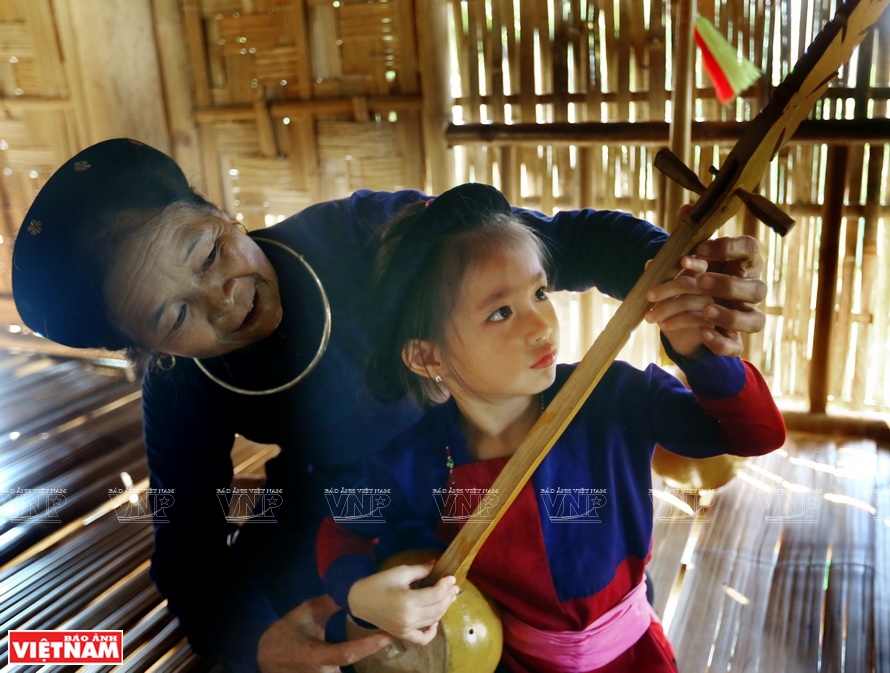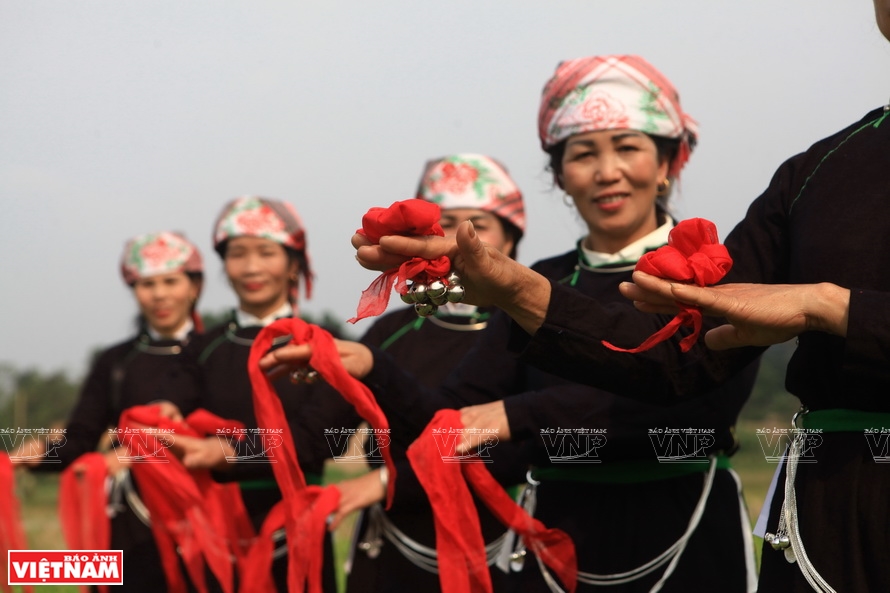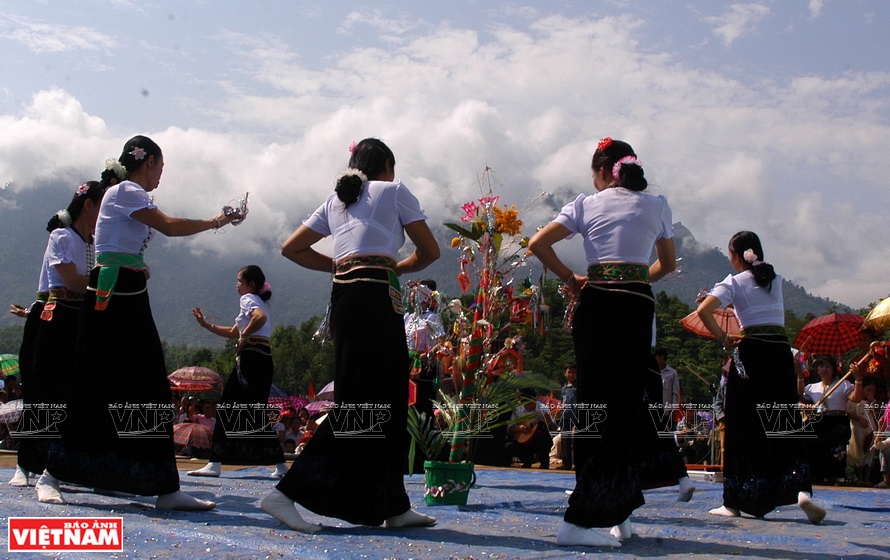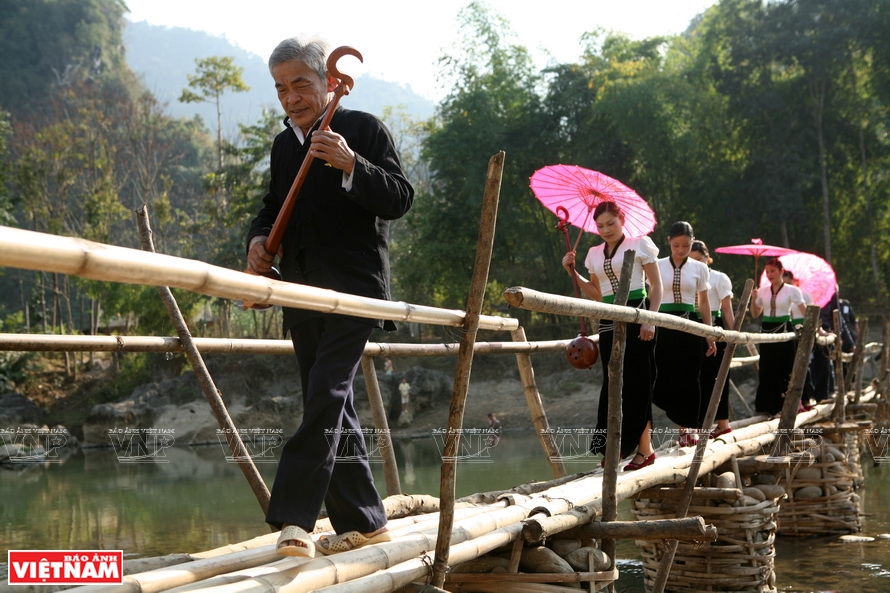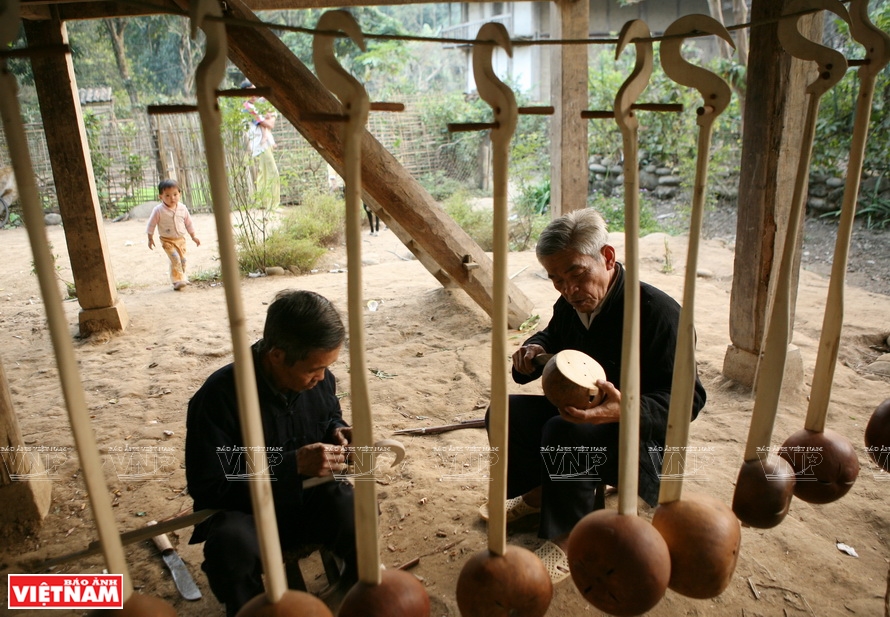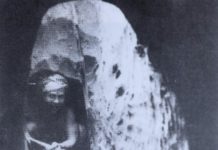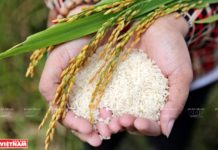|
“For the Tay, Nung and Thai, Mr. or Ms. Then is a knowledgeable intellectual who can give advice on farming and other social issues.”
Dr. To Ngoc Thanh,
President of Vietnam Folk Arts Association. |
Then songs depict the daily lives of people, their love, religious ceremonies and festivals. It is an appealing art performance which can draw the audience into an unreal world. Then traditional worshiping ceremonies reflect the Tay’s outlook on life and the world and show their cultural identity.
We visited Nong Van Sep in Ha Thoi village, Chiem Hoa district, Tuyen Quang, the locality regarded as the cradle of the then songs of the Tay. Sep’s family was holding Cau Khoan, an ancient then worshipping ceremony of the Tay to pray for health and longevity for their parents. The ceremony was conducted by Cao Xiem, a well-known shaman in the region. In a then ceremony like Cau Khoan, the ritual holder is called Mr. or Ms. Then, the spirit medium who connects people with gods.
 Cao Xiem conducts a Cau Khoan ritual for a Tay family. The ritual aims to pray for good health, longevity, peace and luck for people aged 50 or older.Photo: Trinh Bo |
With a dan tinh (three-stringed lute) in his hands, Cao Xiem in a red robe and hat started the Cau Khoan ceremony with an ancient then song. Surrounded by the smoke of incense, the voice of Cao Xiem and the sounds of his dan tinh led people into a mysterious world where descendants go to heaven, asking the gods to bestow health and longevity to their parents.
We also visited Cao Loc district in Lang Son province to explore the enchanting then tunes of the Nung. In the past, whenever an odd incident occurred which could not be explained using common sense, the Nung held a then worshipping ritual. This ritual was held by Ms. Then who sang then songs and played dan tinh, which conveyed the people’s prayers to gods.
|
An offering ritual to invite gods to a festival of the Nung in Lang Son province. Photo: Cong Dat |
A then singing and worshipping ritual of the Nung usually lasts two days with various formalities, including an ancestor worshipping ceremony and a journey to heaven to invite the Jade Emperor to earth. Music is the key element in the ritual with diverse then tunes relevant to each of the formalities.
|
“Then is considered a spiritual product reflecting the social and cultural life of people with a special combination of literature, music, dance, painting and theatre.”
Music theorist and critic Nguyen Thi Minh Chau
|
“Then singing, which is always accompanied by a dan tinh, represents the cultural identity of the Nung community here,” said Hoang Van Pao, a folklore researcher in Lang Son province.
Meanwhile, the then tunes of the Thai in the northwest region bear the humanity of this ethnic group’s traditional cultural values. For the Thai, then singing is not only a religious practice but carries moral lessons which praise virtues, love and patriotism while criticizing vices and bad habits. Then singing of the Thai is an art composed of poetry, music and dancing which arouse beautiful emotions of the soul and aesthetic tastes and human values.
“When ripe rice is spread at the mountain’s feet, young men and women from villages flock to the Then festival” are the verses about the unique Then Kin Pang festival of the Thai in Khong Lao commune, Phong Tho district, Lai Chau.
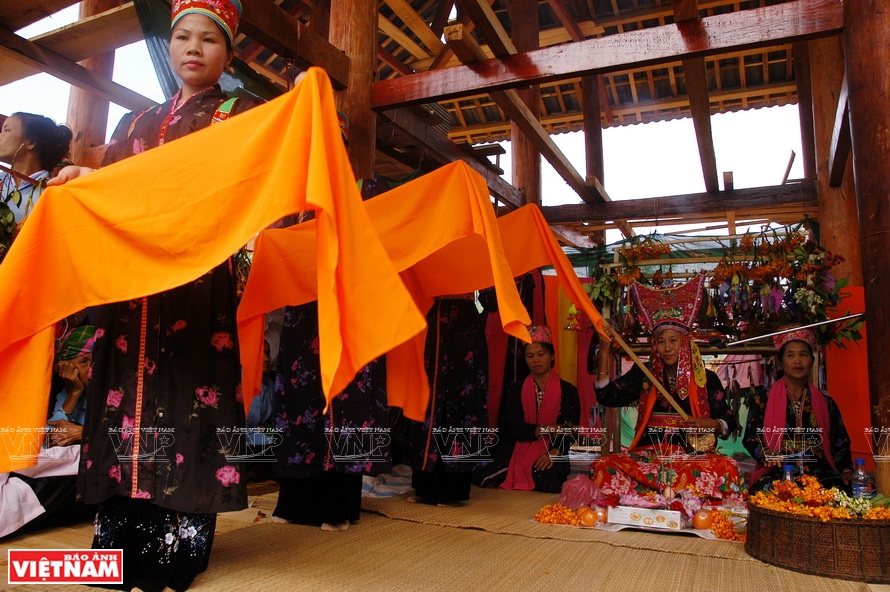 Then Kin Pang is a festival of the white Thai in Khong Lao, Phong Tho, Lai Chau, held in the third lunar month. The festival is to pay gratitude to Mr. and Mrs. Then and pray for bumper crops, prosperity and happiness for Muong villages. Photo: Thong Thien |
Then Kin Pang is held annually on the 10th of the third lunar month to show gratitude to the kind and generous gods in heaven, who are believed by the Thai to go down to the lower world every year to save humans from sufferings. The festival is a religious practice of the Thai which seeks the gods’ support for peace, happiness and good luck throughout the year. The festival is also dedicated to the village founders and heroes with meritorious services to protect the homeland from invaders.
Then Kin Pang consists of a worshipping ritual and festive activities, including a pray-for-rain festival held at Nam Lum spring in Phong Tho. In the pray-for-rain festival, thousands of people from Phong Tho gather at Nam Lum Springs, believed to be where the gods from heaven come to meet people, cheering and splashing water at one another in the belief of getting bumper crops during the year. The festival is followed by folk games and folk dancing and singing.
| The practice of then singing by the Tay, Nung, Thai in Vietnam was named on the list of Intangible Cultural Heritages of Humanity at the 14th session of UNESCO’s Intergovernmental Committee for the Safeguarding of Intangible Cultural Heritage, held in Bogota, Colombia, on December 12, 2019. |
Photos: Trinh Bo, Tat Son, Cong Dat, Tran Hieu & Thong Thien

